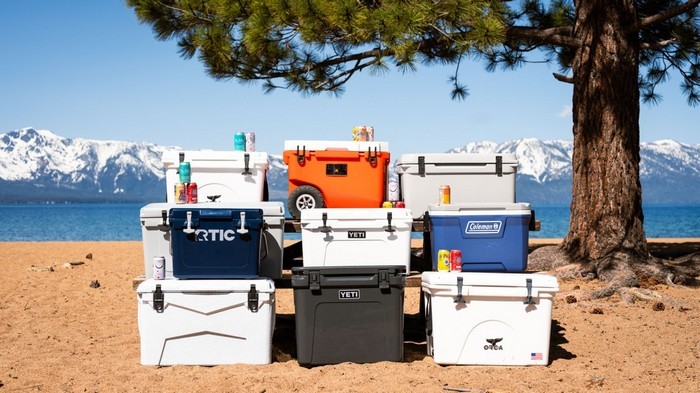Camping is an enjoyable way to connect with nature. Whether you are a beginner or an experienced camper, having the right gear is essential for a successful trip. This article provides a detailed packing list to ensure you have everything you need.
1. Shelter and Sleeping Gear
A comfortable sleeping area is crucial for a good camping experience.
Tent
Size: Choose a tent that fits the number of campers. A two-person tent works for two adults, but it’s better to have some extra space.
Weatherproof: Ensure your tent is waterproof and has good ventilation.
Footprint: A tent footprint protects the tent floor from rocks and moisture.
Sleeping Bag
Temperature Rating: Select a sleeping bag suitable for the expected temperatures. Look for a three-season bag for spring and fall camping.
Size: Ensure it fits your height. Some bags are designed for shorter or taller people.
Sleeping Pad or Air Mattress
Comfort: A sleeping pad adds insulation and cushioning. Choose between foam pads or inflatable air mattresses.
Inflation: If using an air mattress, consider bringing a pump for easy setup.
Pillow
Travel Pillow: A small, packable pillow enhances sleep quality. Alternatively, use a stuff sack filled with clothes.
2. Cooking Gear
Cooking outdoors can be a fun experience, but you need the right tools.
Camp Stove
Fuel Type: Choose between propane or butane stoves. Check for fuel availability.
Portable: Select a lightweight, compact stove for easy transport.
Cookware
Pots and Pans: Bring at least one pot and one pan. Non-stick options are easier to clean.
Utensils: Include spatula, ladle, and a set of cooking utensils.
Eating Gear
Plates and Bowls: Lightweight, durable options are best. Consider reusable plastic or silicone.
Cutlery: Bring forks, knives, and spoons. A multi-tool can serve multiple purposes.
Mugs: Insulated mugs are ideal for hot drinks.
Food Storage
Cooler: If camping for several days, a cooler keeps perishable items fresh.
Containers: Use airtight containers or resealable bags for snacks and leftovers.
3. Clothing
Weather can change quickly in the outdoors. Pack wisely for comfort and protection.
Base Layers
Wicking Fabric: Choose moisture-wicking materials for tops and bottoms. This keeps you dry during hikes.
Temperature Regulation: Layering is key. Bring long-sleeve and short-sleeve options.
Insulating Layer
Fleece or Down Jacket: A warm jacket is essential for chilly nights. Lightweight options are easy to pack.
Outer Layer
Rain Jacket: A waterproof and breathable jacket protects you from rain.
Hiking Pants: Quick-dry pants are best. Look for convertible options that can become shorts.
Footwear
Hiking Boots: Sturdy, supportive boots are essential. Ensure they are broken in before the trip.
Camp Shoes: Bring a pair of sandals or slip-ons for relaxing at camp.
Accessories
Socks: Pack moisture-wicking socks. Bring an extra pair or two.
Hat: A wide-brimmed hat protects against sun and rain.
Gloves: If camping in cooler weather, lightweight gloves can be beneficial.
4. Personal Items
Don’t forget the essentials for personal care and comfort.
Toiletries
Toothbrush and Toothpaste: Travel-sized options save space.
Biodegradable Soap: Use eco-friendly soap for washing dishes and personal hygiene.
Toilet Paper: Pack extra and keep it in a waterproof bag.
First Aid Kit
Basic Supplies: Include band-aids, antiseptic wipes, and pain relievers. Customize your kit based on your needs.
Insect Repellent: Protect yourself from bites with an effective repellent.
Sunscreen: Apply sunscreen regularly to protect against UV rays.
5. Safety and Navigation
Staying safe and finding your way is crucial while camping.
Map and Compass
Navigation Tools: Even if you have GPS, carry a physical map and compass as backups.
Flashlight or Headlamp
Light Source: A reliable flashlight or headlamp is essential for nighttime activities.
Batteries: Bring extra batteries or consider a solar-powered option.
Multi-tool or Knife
Versatile Tool: A good multi-tool can assist with various tasks around camp.
6. Entertainment and Relaxation
Camping is not just about survival; it’s also about enjoying your time in nature.
Books or E-Reader
Reading Material: Bring along a book or e-reader for relaxing evenings at camp.
Board Games or Cards
Group Activities: Games are great for bonding and passing the time.
Camera or Smartphone
Capture Memories: Don’t forget to document your adventure. Consider a waterproof case if you’ll be near water.
7. Miscellaneous Gear
These items can enhance your camping experience.
Backpack
Size: Choose a backpack that fits your gear comfortably. Day packs are suitable for short hikes, while larger packs are needed for longer trips.
Tarp
Ground Cover: A tarp can serve as an extra layer under your tent or a shade area for cooking.
Rope or Paracord
Utility: Useful for hanging items or creating a clothesline.
Trash Bags
Leave No Trace: Bring bags for packing out trash and recycling.
8. Food and Water
Planning meals and ensuring you stay hydrated is vital.
Meal Plan
Pre-planned Meals: Decide what you will eat each day. Include breakfast, lunch, dinner, and snacks.
Non-perishable Foods: Bring items like pasta, rice, canned goods, and snacks that do not spoil.
Water Supply
Water Bottles: Bring reusable water bottles or hydration bladders.
Water Purification: If you’ll be near natural water sources, pack a water filter or purification tablets.
Conclusion
Preparing for a camping trip requires thoughtful planning. A detailed packing list ensures you have everything you need for a comfortable and enjoyable outdoor experience. Always tailor your list to the specific environment and duration of your trip. Happy camping!
Related topics:
- Best Dehydrated Meals for Camping
- How Much Does a Camp Stove Cost?
- What Do We Need for a Camping Trip?

